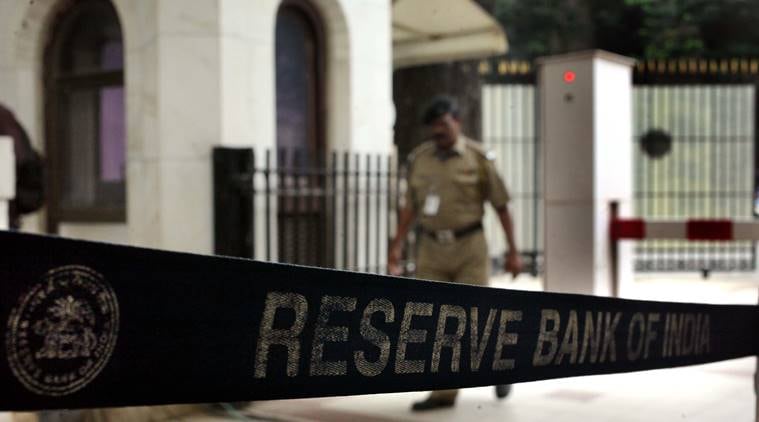Calling a truce
The RBI board meeting signals a new balance of power between bank and government

Both the government and the RBI have stepped back since the board meeting and agreed to discuss further some of the contentious issues. (Express Photo)
Earlier this year, the mandate of the Reserve Bank of New Zealand (RBNZ), which first put in place an inflation targeting regime three decades ago prompting many other central banks to follow suit, was changed from its sole objective of price stability to also include fostering sustainable employment. New Zealand’s finance minister, Grant Robertson, reportedly said last month that reforms were necessary to modernise his country’s central bank to ensure that monetary policy plays its part in the overall economic goals of the government, without compromising on the independence of the bank.
The New Zealand government has also come under criticism for changing the structure of its Monetary Policy Committee (MPC) with the Treasury appointing its observer to the committee as part of a new overhaul of the central bank’s law, which will kick in next year. Elsewhere, in the UK, the Bank of England and Her Majesty’s Treasury — the equivalent of the finance ministry in India — signed a memorandum of agreement in June this year on the financial relationship between the two, outlining the framework for determining its capital, payment in lieu of its dividend, issue of notes and the information sharing arrangements between the Bank and the Treasury.
The agreement says the Bank of England and the Treasury have agreed that information-sharing agreements should be in place to allow transparency and co-operation between the two, which will ensure that there is a common understanding of the bank’s income, expenditure, dividend and capital position. The agreement also says that the Bank will continue to be accountable to parliament in respect of the former’s finances while the role of the Bank’s court of directors in managing its affairs, including setting the bank’s objectives, strategy and management of finances would be respected.
Clearly, winds of change are blowing across some of the stodgiest central banks. In India too, that may well be the case if the outcome of the RBI board meeting on Monday and the acrimonious build up to it, which included a public spat, is any indication. Both the government and the RBI have stepped back since and agreed to discuss further some of the contentious issues including its economic capital and the transfer of surplus to the sovereign in the future. An expert committee will decide on that, but the devil will be in the details.
In a way, what the board meeting signalled is perhaps the beginning of a new balance between the powers of the government and the RBI. In the past, many sensitive issues were settled between the RBI governor and the finance minister, including interest rates, until two years ago when India adopted an inflation targeting regime with an MPC emerging as the final arbiter of interest rates. The RBI governor then functioned “independently” of the RBI board.
On Monday, the press release from the RBI on the meeting referred to the board’s advice to the central bank on a loan recast scheme for small and medium firms subject to conditions which are necessary to ensure financial stability. There may have been a push back by the RBI earlier, but it is this subtle wording and the drift of discussions that could prompt orthodox central bankers to recall the days of fiats from the government on loan melas besides the confusion over the independence of the board and a board-driven central bank.
What appears to have been glossed over is that unlike in the case of public companies, where independent directors are elected by the shareholders, the external directors on the RBI board, among them respected professionals and some ideologues, are appointed by the government. It is possible that the RBI may have made a strategic retreat by allowing the government to win the current round with an eye on the battles ahead. But what is distressing is some of the structural issues, which are at the heart of the current conflict, were drowned in the cacophony over the last few weeks. Take the fiscal cost of recapitalising state-owned banks. The government should have known that the recapitalisation plan of Rs 2.1 lakh crore announced early last year wasn’t adequate for the purpose considering the consistent losses reported by many of these banks after providing for bad loans. The suggestion that RBI reserves could be used to pick up the tab triggered a conflict between the government and the central bank.
There is now greater recognition globally after the 2008 crisis that capital buffers ought to be much higher, especially core capital or equity keeping in mind the levels of leveraging. Rather than revisit the debate on beefing up capital, the government wants to lower capital norms. China’s top few banks are well capitalised and its lenders have complied with the global norms on bank capital. Yet the International Monetary Fund late last year wanted Chinese banks to further strengthen their capital buffers beyond these norms to shield them from potential risks in the future.
There has also been talk of accountability of regulators, which is clearly laid down in some of the charters or agreements of some of the major central banks. Frameworks do help bridge differences between the government and central banks, as the MPC agreement has shown. The RBI governor’s accountability is measured by that agreement. As the push gains momentum on a board-driven or accountable central bank, it would also be useful to consider what the UK Treasury did after the 2008 crisis. It assessed the response of the Treasury to the crisis between 2007 and 2009, identified organisational challenges and its future capability, while recommending an enabling framework to support staff to develop and maintain expertise and professionalism across financial services and markets, division of roles and responsibilities between the Treasury and other agencies including the Bank of England and to create a more enabling environment to challenge policy orthodoxy. The central bank too can’t be consistently dogmatic or rigid, but moral persuasion by the government may work if the Ministry of Finance looked up the report of a committee headed by former finance secretary, Vijay Kelkar, on restructuring the ministry, and went to work on it.
shaji.vikraman@expressindia.com






































No hay comentarios:
Publicar un comentario